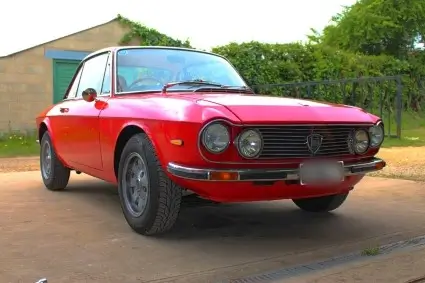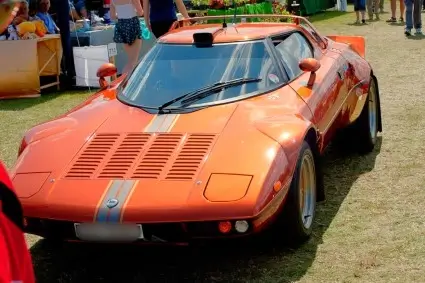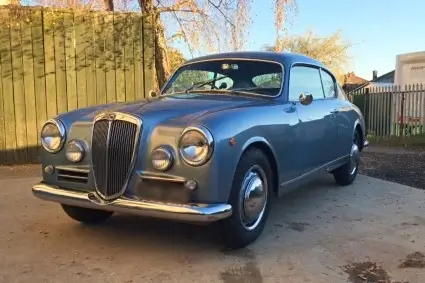Lancia Tyres
Classic Lancia Tyres
On the following pages, Longstone Classic Tyres give classic tyre fitment recommendations for Lancia cars.
01302 711 123
or
Email: sales@longstonetyres.co.uk
Lancia Tyres
Classic Lancia cars are well serviced by the classic car world, going back to the pre war period and including the millimetric tyres for cars like the Lancia Aurelia with 165R400 tyres we have a choice of Michelin X and Pirelli Cinturato. We even have 175 HR 400 PIRELLI CINTURATO CA67 tyres for the Lancia Flaminia Coupe and 145R14 tyres for the earlier sporty models of the Lancia Fulvia Coupe, and 175 HR 14 Michelin XAS for the later Fulvia 1600HF.
Lancia History
Lancia & C. Fabbrica Automobili was formed on November 27, 1906 in Turin by two Fiat racing drivers, Vincenzo Lancia and Claudio Fogolin. Lancia's first automobile was the "Tipo 51" or "12 HP" (later renamed "Alfa"), which was produced from 1907 to 1908. It was powered by a tiny four-cylinder engine with a power output of 28 horsepower. Lancia produced their first truck, the Jota, in 1915. Vincenzo died in 1937, Adele Miglietti Lancia, his wife, and his son, Gianni Lancia, took over the firm. Vittorio Jano agreed to join as an engineer after they persuaded him. Jano was already well-known for designing several Alfa Romeo models, including some of the most successful race cars of all time, such as the 6C, P2, and P3.
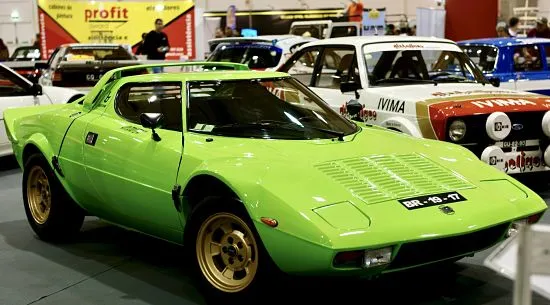
Lancia is well-known in the automobile industry for introducing vehicles with a slew of advancements. The Theta of 1913 was the first European manufacturing automobile to incorporate a full electrical system as a standard kit. Lancia's first monocoque chassis automobile, the Lambda, which was built from 1922 to 1931, had 'Sliding Pillar' independent front suspension, which combined the spring and hydraulic damper into a single element. The first 5-speed gearbox was used in a manufacturing automobile in 1948. Lancia introduced the first-ever full-production V6 engine in the 1950 Aurelia, following previous industry-leading experimentation with V8 and V12 engine types.
It was also the first company to develop a V4 engine. Other breakthroughs were the use of independent suspension in commercial automobiles (at an age when live axles for both the front and back axles of a car were typical), and rear transaxles, which were initially added to the Aurelia and Flaminia ranges. Because of this desire for innovation, persistent pursuit of excellence, focus on quality, difficult building methods, and obsolete manufacturing technology, all automobiles were basically hand-made. With nothing in common between the many models, production costs continued to climb, but stagnant demand finally harmed Lancia's profitability. Gianni Lancia, a graduate engineer, served as Lancia's president from 1947 until 1955. Lancia was taken over by the Pesenti family in 1956, with Carlo Pesenti in command.
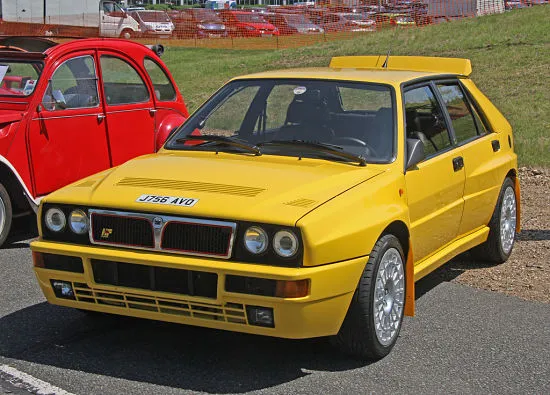
The old Lancia Borgo San Paolo Plant in Turin has been transformed as a public centre. In October 1969, Fiat initiated a takeover proposal. Lancia accepted it since the firm was losing money, with losses totalling GB£20 million in 1969. This was not the end of the distinctive Lancia marque, and new models in the 1970s such as the Stratos, Gamma, and Beta demonstrated that Fiat wanted to maintain the image of the brand it had purchased. Lancia took over Autobianchi, which had been purchased by Fiat Group only a year previously.
Lancia had a lot of success in rallying during the 1970s and 1980s, winning a lot of World Rally Championships. During the 1980s, the business collaborated with Saab Automobile, with the Lancia Delta being offered in Sweden as the Saab 600. The Lancia Thema shared a basis with the Saab 9000, Fiat Croma, and Alfa Romeo 164 in 1985. All models were closely connected to other Fiat models in the 1990s.
Fiat's automotive business were reorganised on February 1, 2007. Fiat Auto was renamed Fiat Group Automobiles S.p.A., the unit of Fiat S.p.A. in charge of mainstream vehicle manufacture. Concurrently, the present firm, Lancia Automobiles S.p.A., was formed from the pre-existing brand and is owned entirely by FCA. Lancia took a new course in 2011 when it launched new models made by Chrysler and sold under the Lancia name in numerous European countries. Lancia-built cars, on the other hand, began to be offered in right-hand drive regions under the Chrysler label.
Lancia's parent company, Fiat Group Automobiles S.p.A., was renamed FCA Italy S.p.A. in 2015, reflecting the earlier merger of Fiat S.p.A. and Fiat Chrysler Automobiles. Despite concerns about the brand's future after the Stellantis merger was completed in 2021, Lancia was included in a collaborative group with sibling businesses Alfa Romeo and DS Automobiles to create new premium cars for the 2024 model year. As part of Stellantis' Lancia recovery strategy, Luca Napolitano was named CEO and Jean-Pierre Ploué was named Chief Designer. In June 2021, three new electric vehicles were announced: a replacement city car for the Ypsilon, a compact crossover, and a compact hatchback.

